CogAT® Nonverbal Questions for Grade 5 | Practice with Gifted
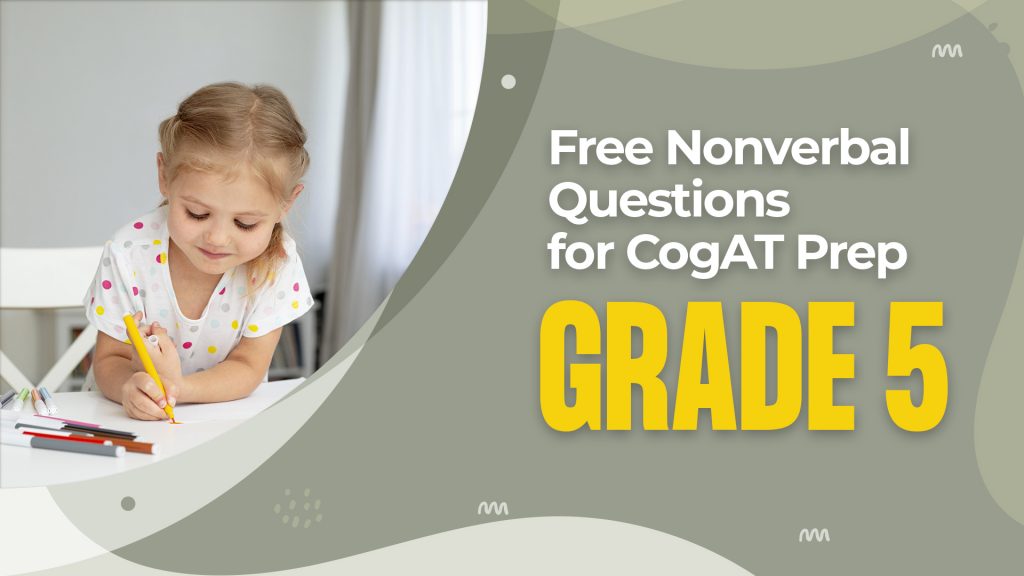
Is your gifted child prepared for the big CogAT 5th-grade test? This article will cover everything you need to know about preparing your precious for the exam. The CogAT test is one of the most commonly used aptitude tests for students interested to get into the gifted and talented education program at school. The CogAT test for grade 5 is divided into three parts: verbal, quantitative, and nonverbal. By the use of spatial and figurative content, the CogAT Nonverbal Battery evaluates students’ capacity for thinking. As it places less emphasis on linguistic ability, the CogAT level 11 is useful for evaluating students who do not speak English as their first language.
When a student reaches fifth grade, he/she can focus for extended periods of time and is skilled at problem-solving. Hence, the questions are more challenging as they’re considered to be capable of solving more difficult tasks. Here, the gifted test is a great way to judge how well the 5th grader copes if he/she encounters grueling questions. As previously stated, the CogAT nonverbal test questions are primarily visual in nature and do not require reading.
The three areas of nonverbal battery are figure matrices, paper folding, and figure classification. These three sections determine the total CogAT nonverbal score.
The first section of this battery is figure matrices. This section’s questions are 2 x 2 matrices with two shapes in the top row, one shape in the bottom row, and the last box empty. To finish the pattern by filling in the bottom blank square, your child must first figure out how the images in the top row fit together.
Quick tip: It’s critical to look for a pattern in the top row when answering these questions. When your kid finds the pattern, scroll down to the bottom row of response options and ask him/her to choose the one that most closely matches the pattern.
The next section is paper folding. The paper folding questions on the CogAT are the most unusual. In these questions, you will see a hole-punched, folded sheet of paper. You must decide how the paper will look when unfolded.
Quick tip: With each unfolding of the paper, the number of shapes will double. When the paper is folded once and one shape is cut out, it will have two shapes when unfolded. When folded once and two shapes are cut out, it will have four shapes when unfolded. If your child is having difficulty understanding a particular question, get some actual paper (and, if necessary, a hole punch or scissors) and assist your child in visualizing and solving the problem. Of course, this will not be an option on the actual test, but it can help your child improve his understanding of the diagrams and visualization of solutions.
Figure classification is the final section of the nonverbal battery. When answering questions from this section, your child will notice three figures. Before choosing a figure from the available options, he or she must consider how they complement one another.
Quick tip: Before answering, consider how the three figures fit together. If your precious can’t immediately identify the correct response, try to make him/her identify the pattern before looking at the answer options. Once the pattern is found, look through the possible answers to see if anything matches.
For CogAT sample questions, click here

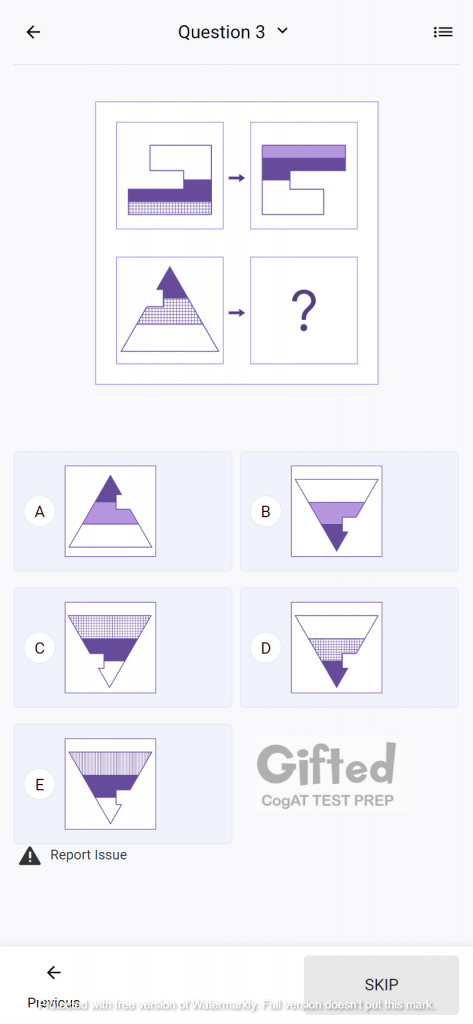

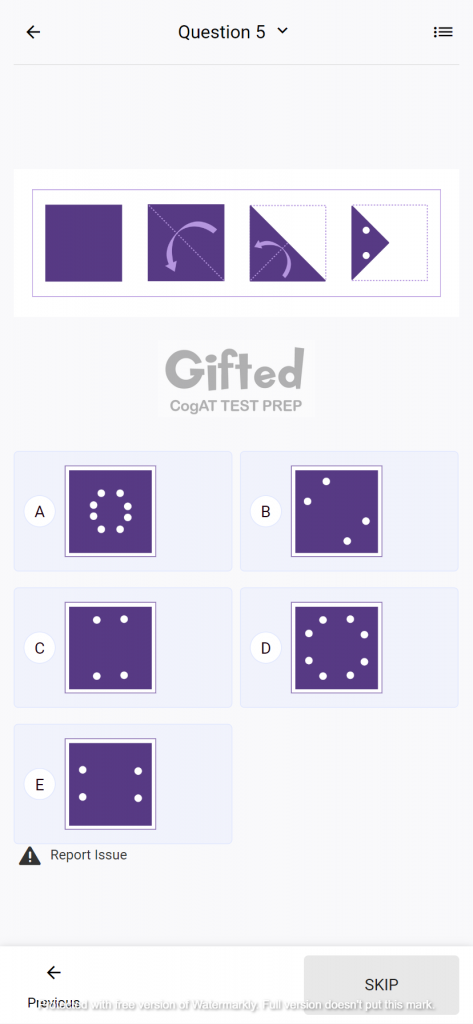
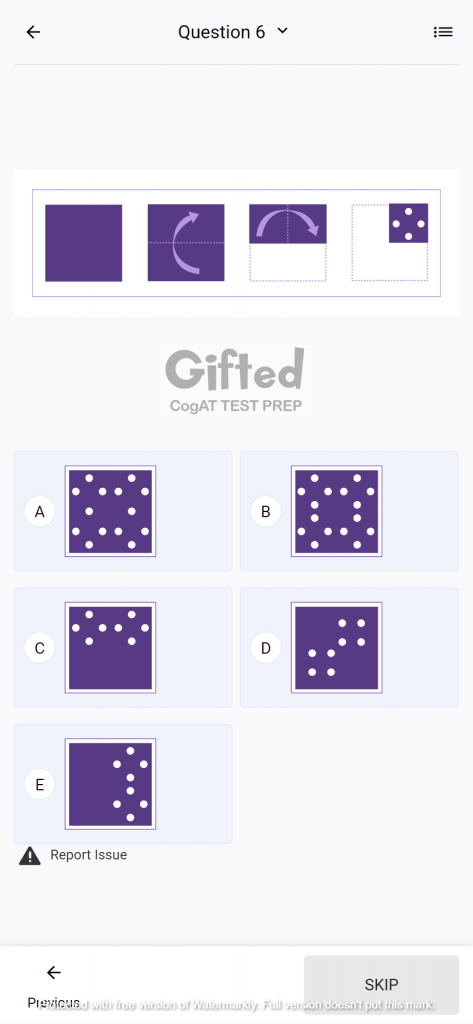
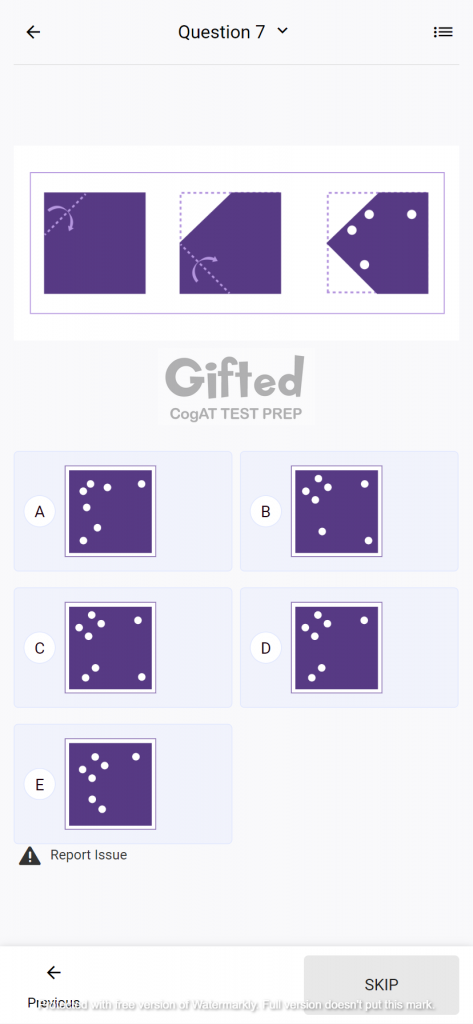
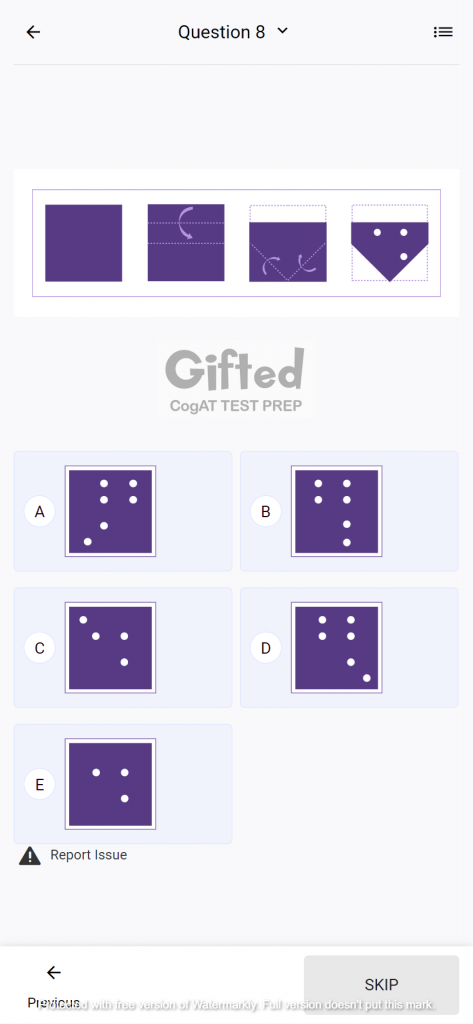
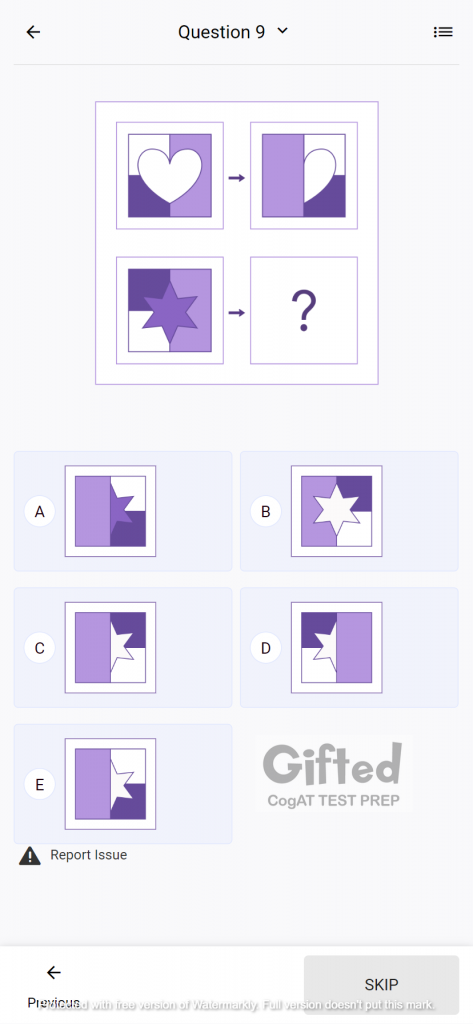
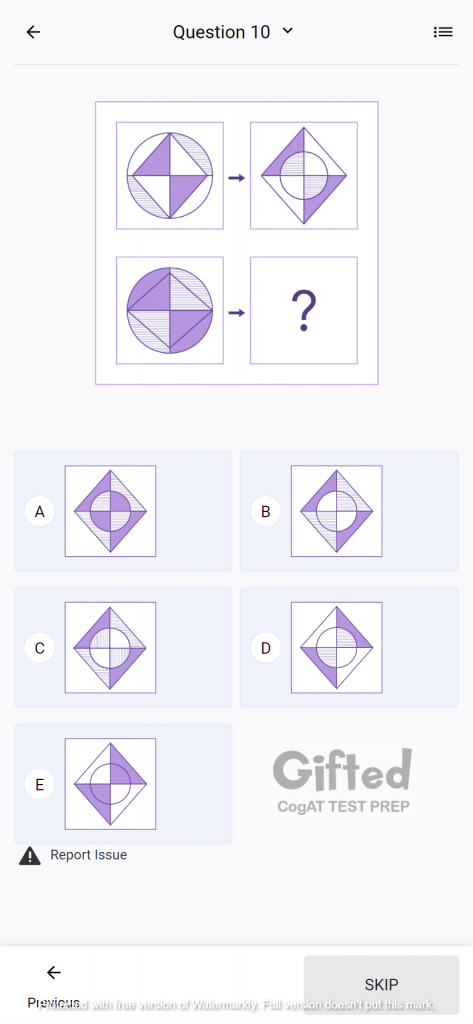
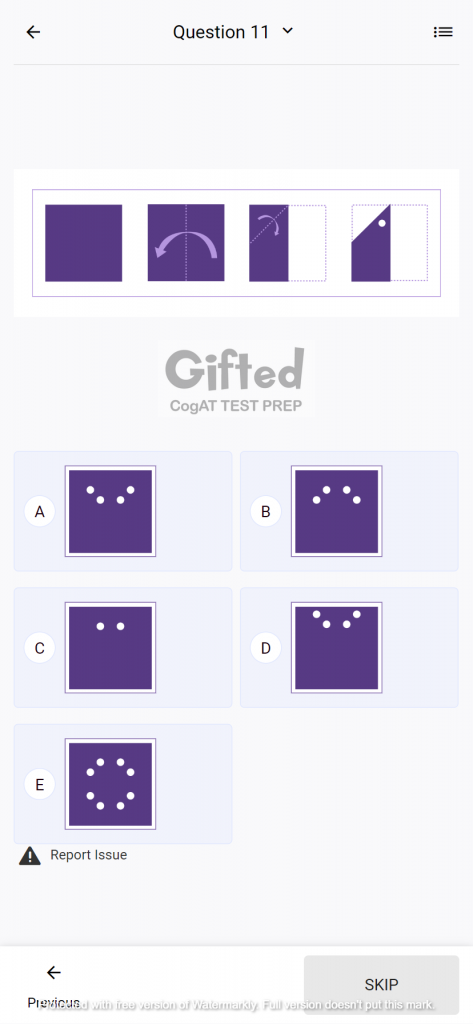

For more detailed explanations, click here.
The Gifted Test Prep has compiled the most extensive CogAT question bank for your fifth graders, which will help him/her to prepare thoroughly for the exam. Knowing your child’s cognitive abilities will enable you to make informed decisions as parents because a high score on the gifted test can significantly impact your child’s academic career. So, encourage your kiddo to solve as many questions as possible as this will make him/her feel like a champion even before the exam.
Cognitive Abilities Test™ (CogAT®) is a registered trademark of Riverside Assessments, LLC and its affiliates (“Riverside”). Riverside does not sponsor or endorse any Gifted.achieve.ai products or programs, nor has this gifted.achieve.ai product or program been reviewed, certified, or approved by Riverside. The questions used by gifted.achieve.ai are Gifted.achieve.ai’s own materials, created based on publicly available information, and in no way do they correspond to actual CogAT® testing materials. Gifted.achieve.ai uses practice materials only; not actual test questions. Trademarks referring to Riverside are used for nominative purposes only and such trademarks are solely the property of their respective owner.